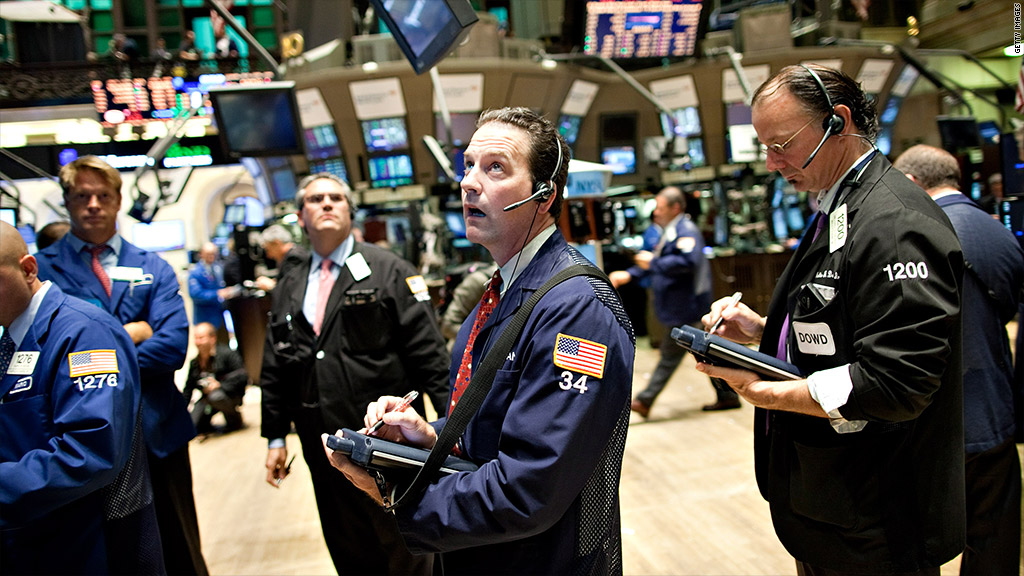
In the new age of high speed trading, U.S. Treasuries could become the next flash crash victim.
High-frequency trading now accounts for roughly 40% to 50% of the daily volume in Treasuries, compared to a "negligible amount" just five years ago, according to research firm Tabb Group.
The enormous size of the Treasuries market makes it appealing to firms that make money from huge volumes of trades.
As with stocks, the fear is that flash crashes could cause sharp plunges in Treasury prices. That would lead to soaring yields, from all-time lows below 1.5%, to as high as 4%.
Some of the biggest players in high-frequency trading, DRW Holdings, Sun Trading, Virtu Financial, Hudson River Trading, Jump Trading and GSA Capital Partners, have all been expanding their reach to Treasuries, according to numerous trading sources.
The Treasury Department wasn't able to provide recent breakdowns on trading in government debt.
"It's been less profitable for high-frequency firms to trade equities, so these firms are looking at other asset classes," said Justin Schack, a managing director at the institutional brokerage Rosenblatt Securities. "Treasuries are one of the most liquid markets in the world, so it's very fertile ground for high-frequency market making."
That liquidity has attracted hedge funds that use computer driven formulas to capture profits from tiny price movements.
For stocks this year alone, three events clearly illustrate the dangers of computer driven speed trading: Nasdaq's (NDAQ) botched Facebook (FB) IPO; the bungled IPO of the BATS stock exchange; and most recently, errant moves in 150 NYSE-listed stocks caused by brokerage firm Knight Capital's (KCG) rogue algorithms.
Related: UBS lost $356 million on Facebook, suing Nasdaq
Firms that buy and sell millions of shares of anything per second look to capture profits from tiny price fluctuations, but the computers driving these trades are typically programmed to halt trading as soon as prices move outside a predetermined range.
"Now when there's uncertainty, there's nobody there and everybody steps back," said Dennis Dick, a proprietary trader at Bright Trading and the founder of the research firm Premarketinfo. "These firms take no risk because they can simply turn off."
That "off-button," in combination with a massive computer-driven trade by a mutual fund, have been seen as the factors that led to the May 6, 2010, "flash crash" that caused the Dow Jones industrial average to plunge 1,000 points in minutes.
Research firm Nanex estimates that this year there have already been more than 10,000 micro-crashes, where stocks dropped far outside a normal trading range for several seconds. Even Warren Buffett's Berkshire Hathaway (BRKA) succumbed to such a crash on May 3, when, within seconds, its high-priced Class A shares dropped 90% and then just as quickly recovered.
"Very sophisticated institutions known for their technological prowess have been badly stubbing their toes on the technology," said Andrew Lo, a finance professor at MIT. "What we've seen recently is the interaction between Moore's Law and Murphy's Law."
Related: The Wall Street machine is broken
Moore's law, the theory that the speed of computer chips would double every two years, has clearly played a role. While stock trading has rapidly become electronically driven over the past decade, the dehumanization of bond trading has moved at a slower pace. But that's quickly changing.
"We're in the middle of a technological arms race in trading," said Lo. Trading firms have found it difficult to resist the lure of significantly cheaper costs that come with electronic trading. BlackRock, the world's second-largest bond firm, is testing an internal electronic bond trading system. And Morgan Stanley (MS) has reportedly been cutting its bond trading staff in favor of computers.
Still the greatest safeguard for the U.S. government bond market is that, by and large, investors still find value in Treasuries since they're backed by the U.S. government.
So while a trading glitch may fundamentally reshape investors' perceptions of the value of a company, rogue algorithms in the Treasuries market may not have the same impact.


